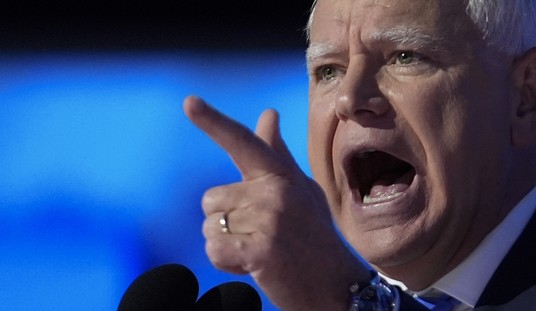
As President Obama doubles down on his green energy initiative, maybe it’s time to look around the world and see how the foray into the future of rainbows and unicorn farts is working out for our more progressive and forward-thinking allies. We’ll visit Spain, Germany and Australia and see how their campaigns to replace fossil fuels and nuclear energy in favor of wind and solar energy are working out for their economies.
Spain is regretting its green energy adventure, restructuring generous subsidies which …
… have been wildly successful at encouraging solar and wind farm construction. They have utterly failed, though, to help build profitable industries. Now the Spanish central government is dealing with a residual tariff deficit of €4.5 billion [$5.9 billion] for this year alone. That’s the difference between the amount Spanish consumers pay for electricity and the cost of producing it.
Not surprisingly, industry groups are outraged over the move, which will cost solar and wind companies €2.7 billion [$3.6 billion] per year in subsidies and hike consumer rates by 3.2 percent. [“Spain Cuts Green Energy Losses“, The American Interest, July 15, 2013.]
How go things in Deutschland, after its knee-jerk decision to shut down nuclear power generation, post-Fukushima earthquake? Not that anyone could have foreseen problems with that * …
Amid talk of a trade war with China over cheap imported solar panels, the giant German engineering firm Siemens shuttered its solar division after hemorrhaging more than a billion dollars in just two years. … [Two] of the country’s biggest solar firms, Conenergy and Gehrlicher Solar, both filed for insolvency last week. Another engineering titan, Bosch, has also decided to get out of the solar market.
Meanwhile, the country’s other major green energy project—off-shore windfarms in the Baltic and North Sea—is also threatening to turn into a boondoggle. The massive projects off the northern coast of Germany are supposed to supply 9% of the country’s energy needs by 2023 and were a cornerstone of the government’s plan to abandon nuclear power. Yet engineering challenges, uncertainty around future energy prices and NIMBYs who object to overhead high-tension wires passing through their neighborhoods all threaten to make the project a dangerous white elephant. [“Germans Re-Thinking ‘Turn’ to Green Energy“,The American Interest, July 13, 2013.]
Just how weary are the Germans of their new green energy utopia?
“[Wind energy is] all an enormous swindle,” says Besigheim-based auditor Walter Müller, 65, whose former job involved calculating the value of bankrupt East German factories. Today, he takes the same hard-as-nails approach to examining the books of wind farm companies.
His verdict? A fabric of lies and deception. …
The wind turbines, whose job it was to protect the environment, are not running smoothly. Germany’s biggest infrastructure project is a mess. Everyone wants to get away from nuclear. But at what price?
Even Winfried Kretschmann, the governor of Baden-Württemberg and the first Green Party member to govern any German state, is sounding contrite. But his resolve remains as firm as ever: “There is simply no alternative to disfiguring the countryside like this,” he insists. [“Eco-Blowback: Mutiny in the Land of Wind Turbines“, Der Spiegel, July 12, 2013.]
Sounds ominously like “We’ve got to destroy the village in order to save it.” Coming from an environmentalist, these are chilling words indeed.
A May 23 article in The New American (“German Firms Flee to U.S. to Avoid Staggering ‘Green’ Energy Costs“) quotes an analysis of the German exodus in Deutsche Welle, and then opines:
…[B]ased on the administration’s history of antipathy to all fossil fuels, its use of the EPA to quash energy production, and its commitment to vastly expanding our nation’s reliance on renewable energy, [Obama’s] recent natural gas concessions could prove to be a temporary political move. If that proves to be the case, the German companies that are moving to America to escape Merkel’s unsustainable “renewable revolution” could find themselves facing the same predicament down the road here.
Australia has always been a leader in the effort to control carbon dioxide emissions. Its experience has demonstrated that punitive taxes make Australian goods less competitive on the world market, so it is moving away from a fixed tax on CO2 emissions toward a trading scheme:
Australian Prime Minister Kevin Rudd said that the country would scrap its carbon tax, which is the highest in the world, and move to an emissions trading system which is expected to lower the price of emitting carbon dioxide. …
“The fixed carbon price of $24.15 a ton will be removed in favor of a floating price, thought to be between $6 and $10 a ton,” ABC Rural reports. “The government is moving in this direction because a floating price takes cost-of-living pressures off Australian families and still protects the environment and acts on climate change,” Rudd told reporters. [“Aussies Plan to Ditch Carbon Tax,” The Daily Caller, July 15, 2013.]
As a point of reference, note that the Obama Administration recently changed the “Social Cost of Carbon” (SCC), an imputed value used to signify the total societal cost of carbon in its cost-benefit analyses, from $23.80 to $38.00 per ton.
Consider these experiences in Spain, Germany and Australia, and then ask yourself why any thinking person would embark down that same road.
[Emphasis has been added throughout.]
* Update – Upon rereading that 2011 post, I still like this conclusion:
The moral of this story is that if you leave your energy planning up to a bunch of greenies, you get an unreliable and impractical solution that no one can afford. It might warm the cockles of your heart for a while but it will freeze the other ones off.













Join the conversation as a VIP Member